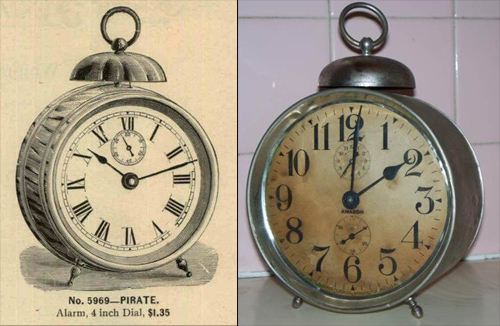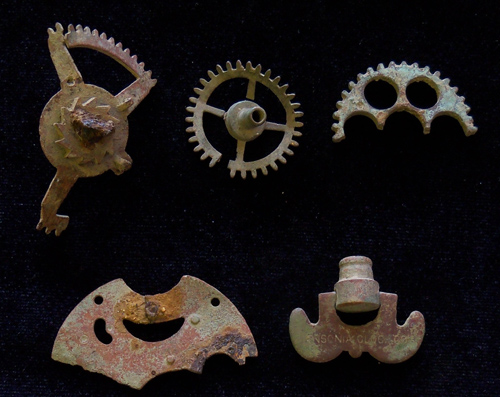Featured Fragment – Houston-LeCompt Site clock parts
Clocks have been an integral role in the home for centuries. Measuring time was needed for many aspects of home life but clocks were also used to display status. As Richardson Wright said in 1927, “It is said that the house of every substantial farmer in the days following the Revolution had three ornaments—a polygot bible, a tine reflector and a wooden clock” (Smith 1997). During the late-eighteenth century, people were beginning to purchase things like knives, forks, looking glasses and clocks to create the look and feel of a more gentile surrounding within their middling households (Bushman 1993). This circulation increased with great enthusiasm in the first half of the nineteenth century (Bushman 1993).

(Left) 1896 Advertisement from Oskamp Nolting & Co. Publications showing one style of Ansonia Alarm Clock (ebay 2014). (Right) Circa 1910 Ansonia Clock (National Association of Watch and Clock Collectors 2014).
The clock parts shown below were recovered during the excavation of the Houston-LeCompt site in Delaware. These items represent various internal parts of an Ansonia alarm clock dating to the late-nineteenth through early-twentieth century. Clock parts are found on my archaeological sites although, not typically in great numbers. The high density of parts from the Houston-LeCompt site are attributed to the alarm clock possibly breaking and subsequently having its parts spread across the site.

Sample of Late-Nineteenth and Early-Twentieth Century Clock Parts from the Houston-LeCompt Site, Delaware.
Recovered for the Delaware Department of Transportation and the FHWA
Any distributions of blog content, including text or images, should reference this blog in full citation. Data contained herein is the property of Dovetail Cultural Resource Group and its affiliates.
